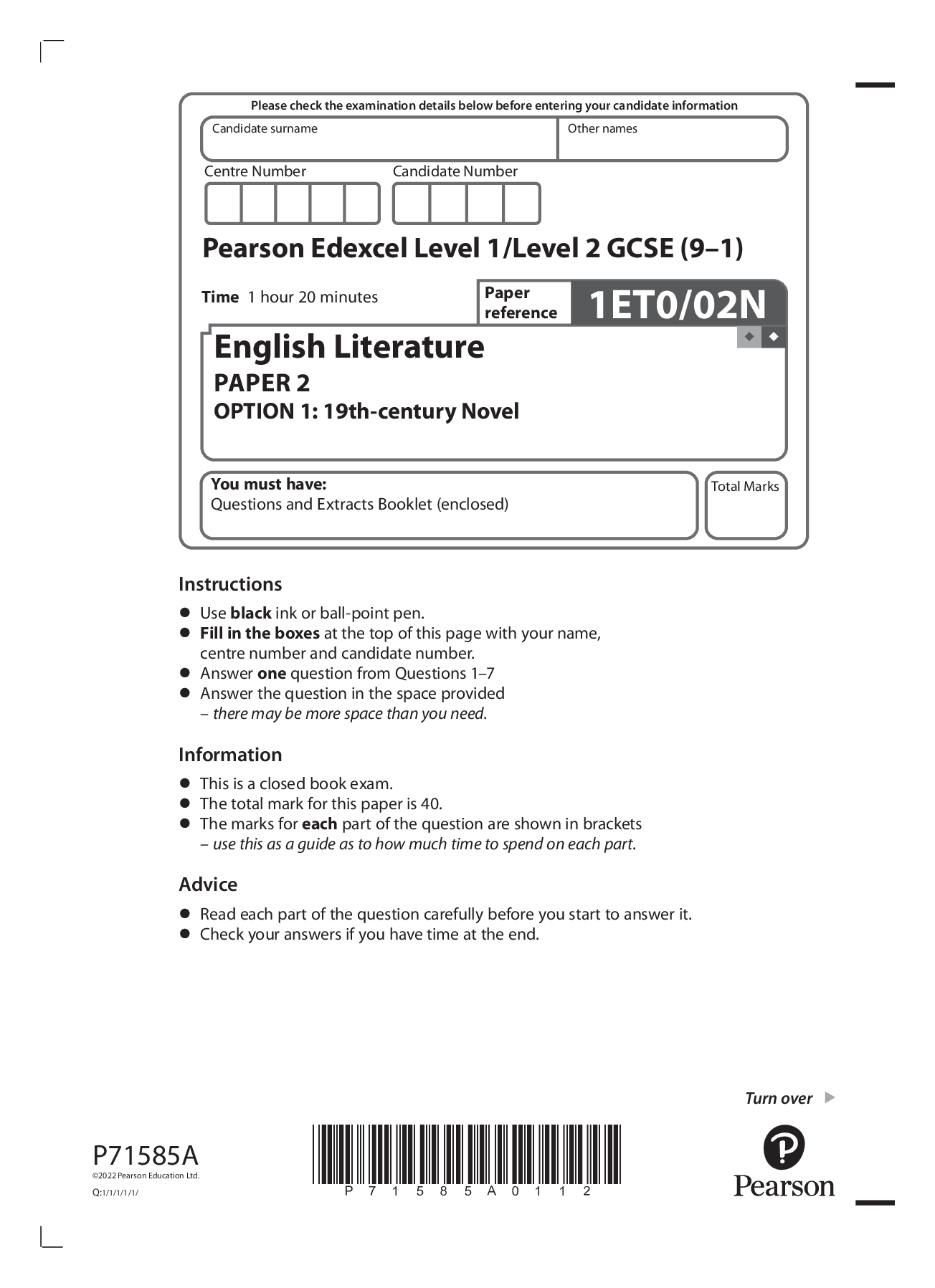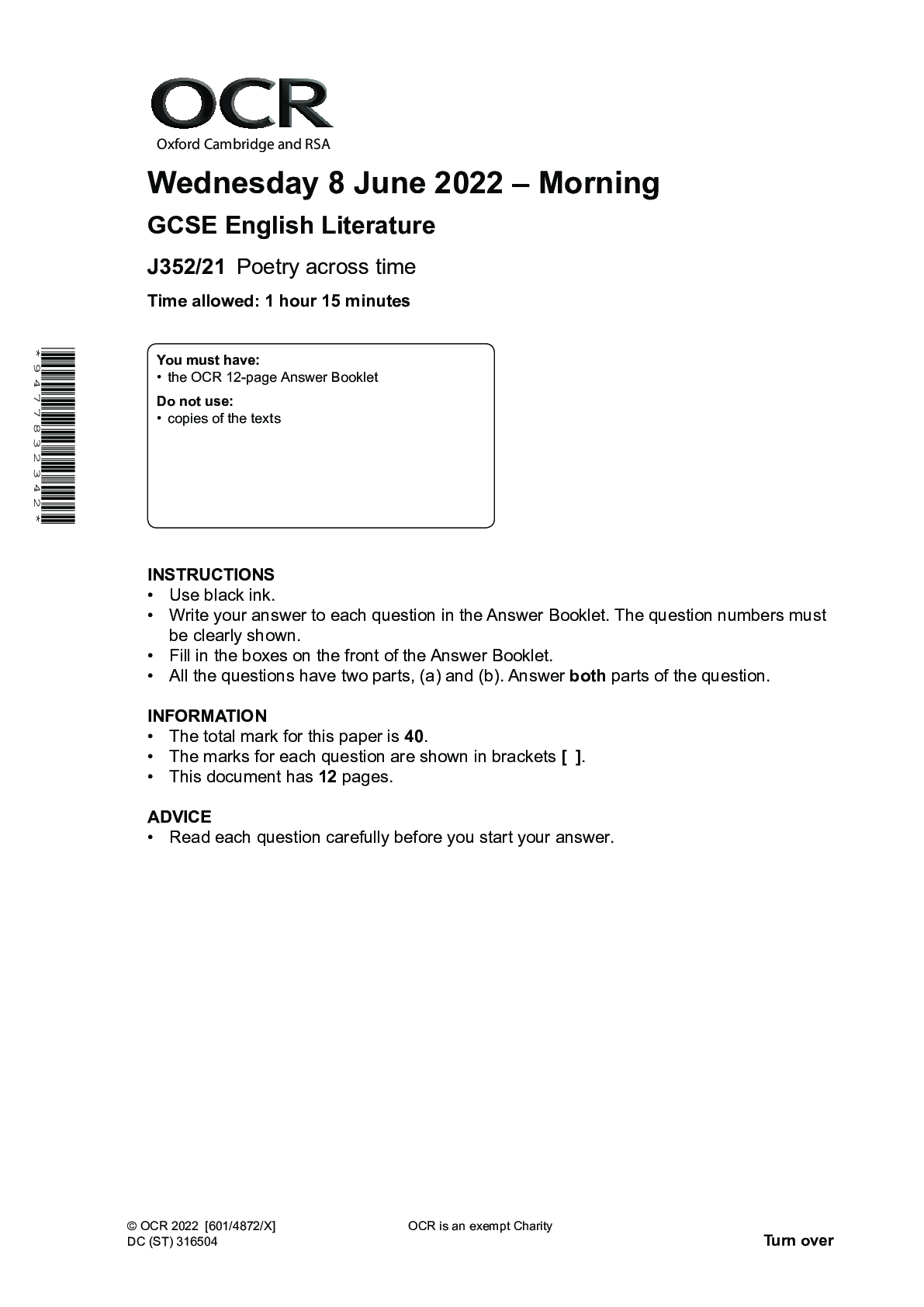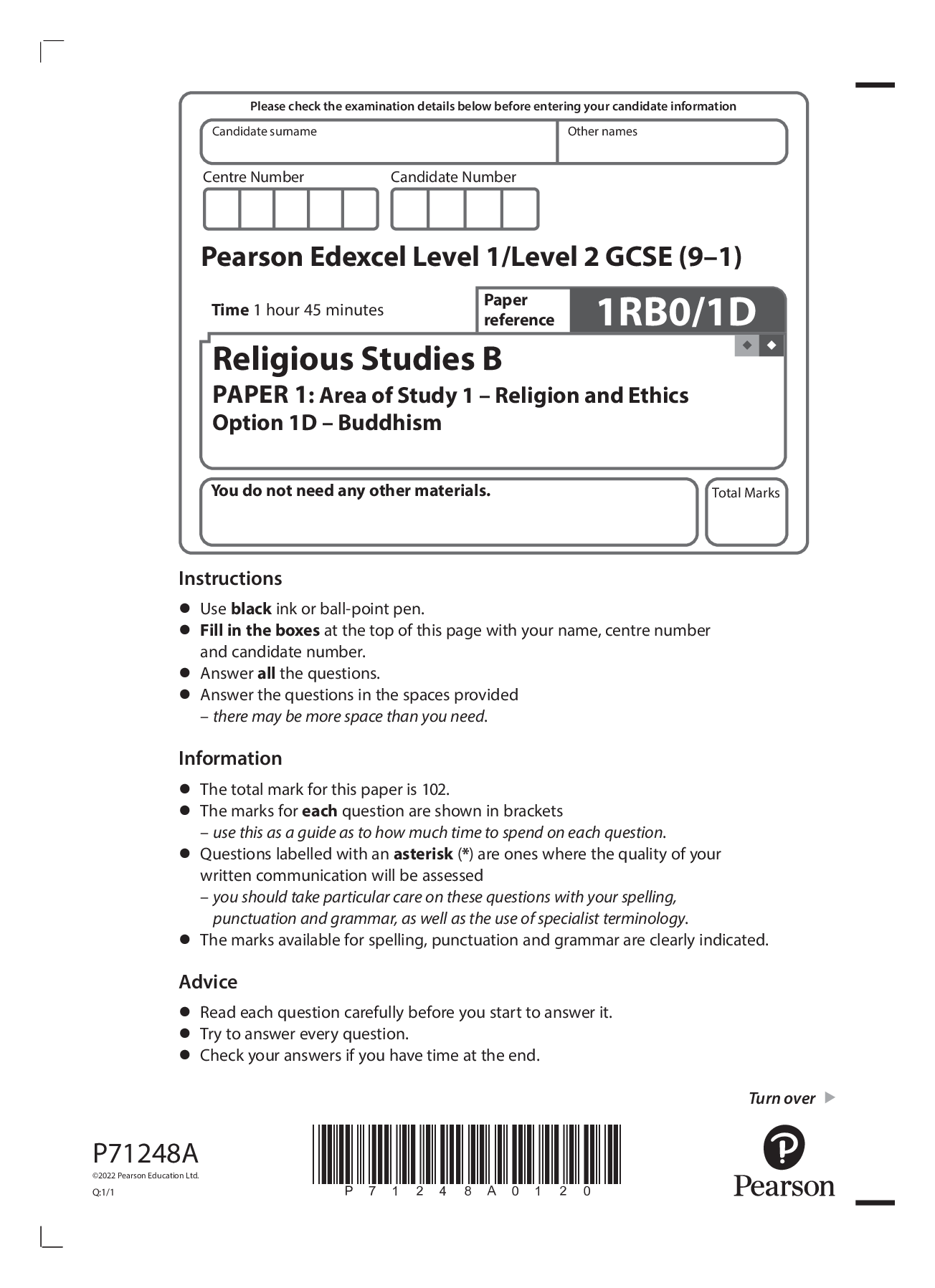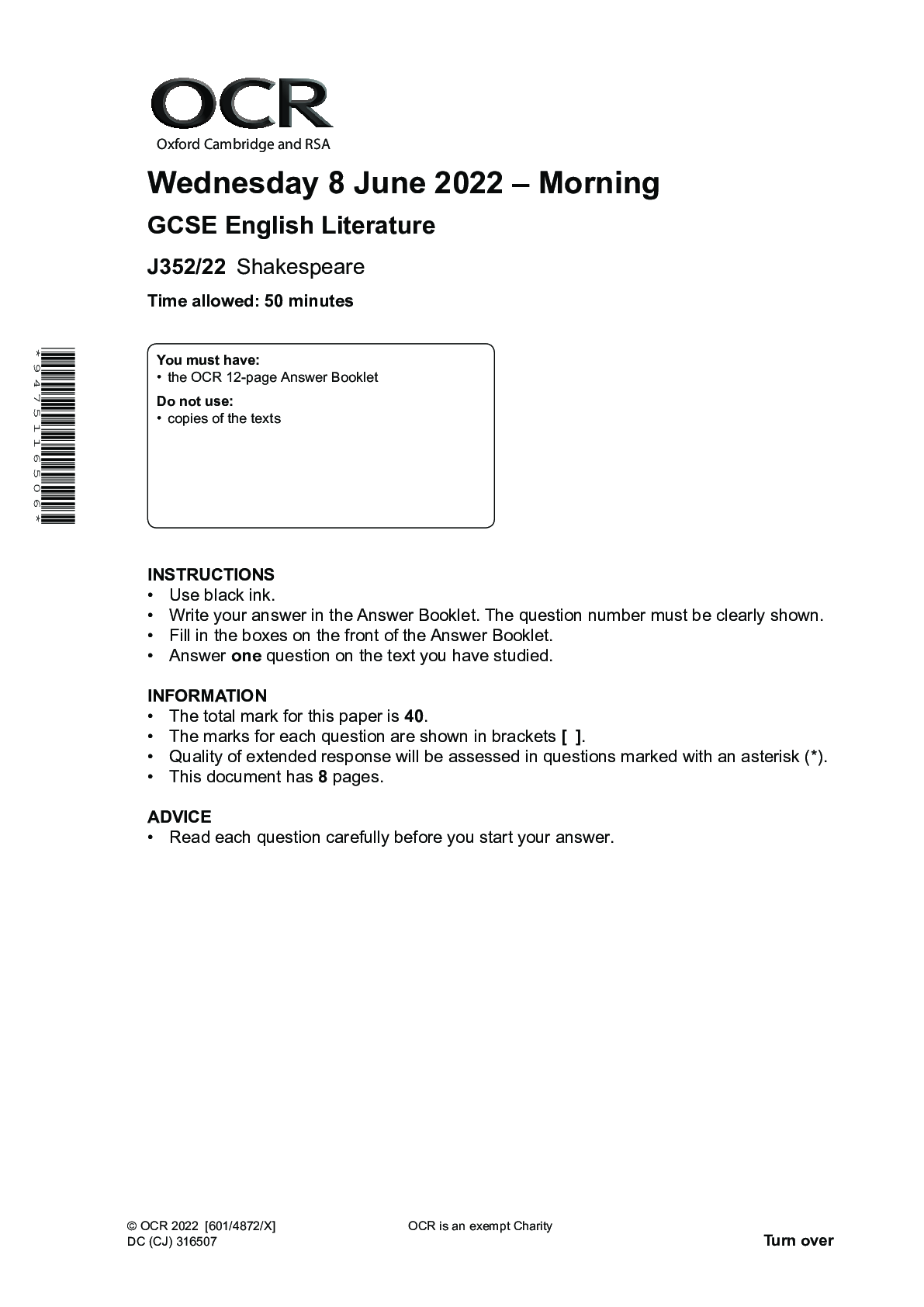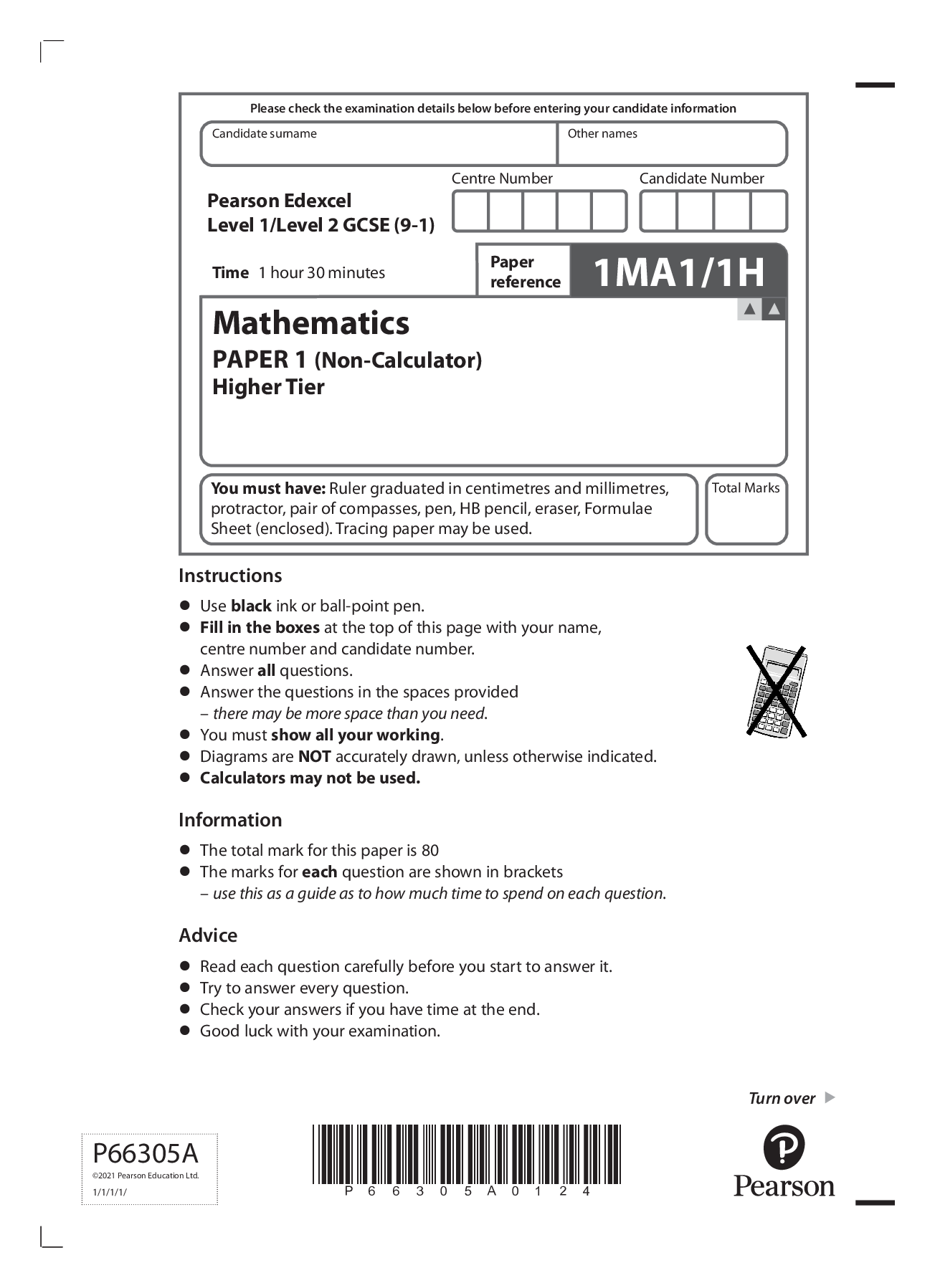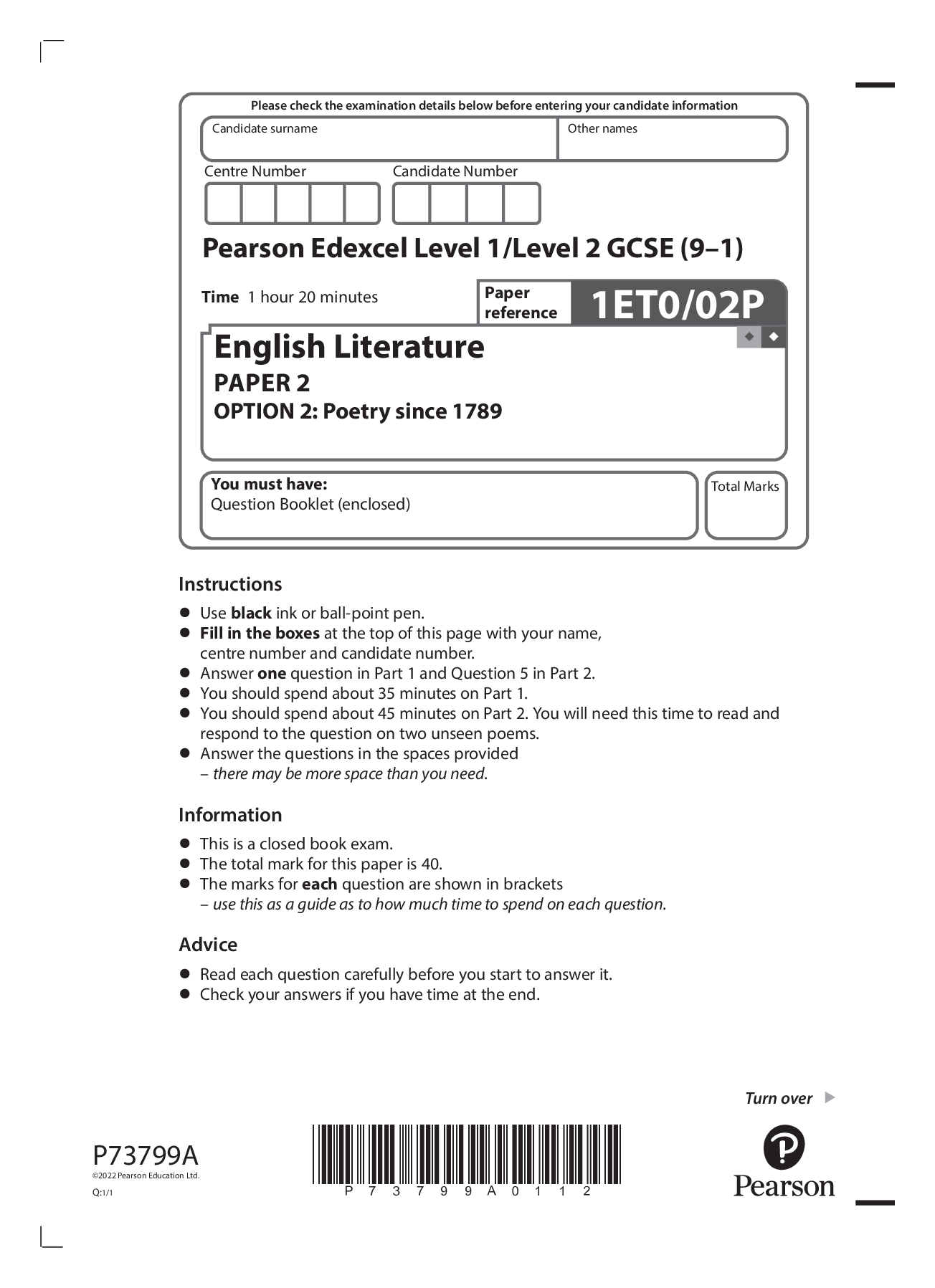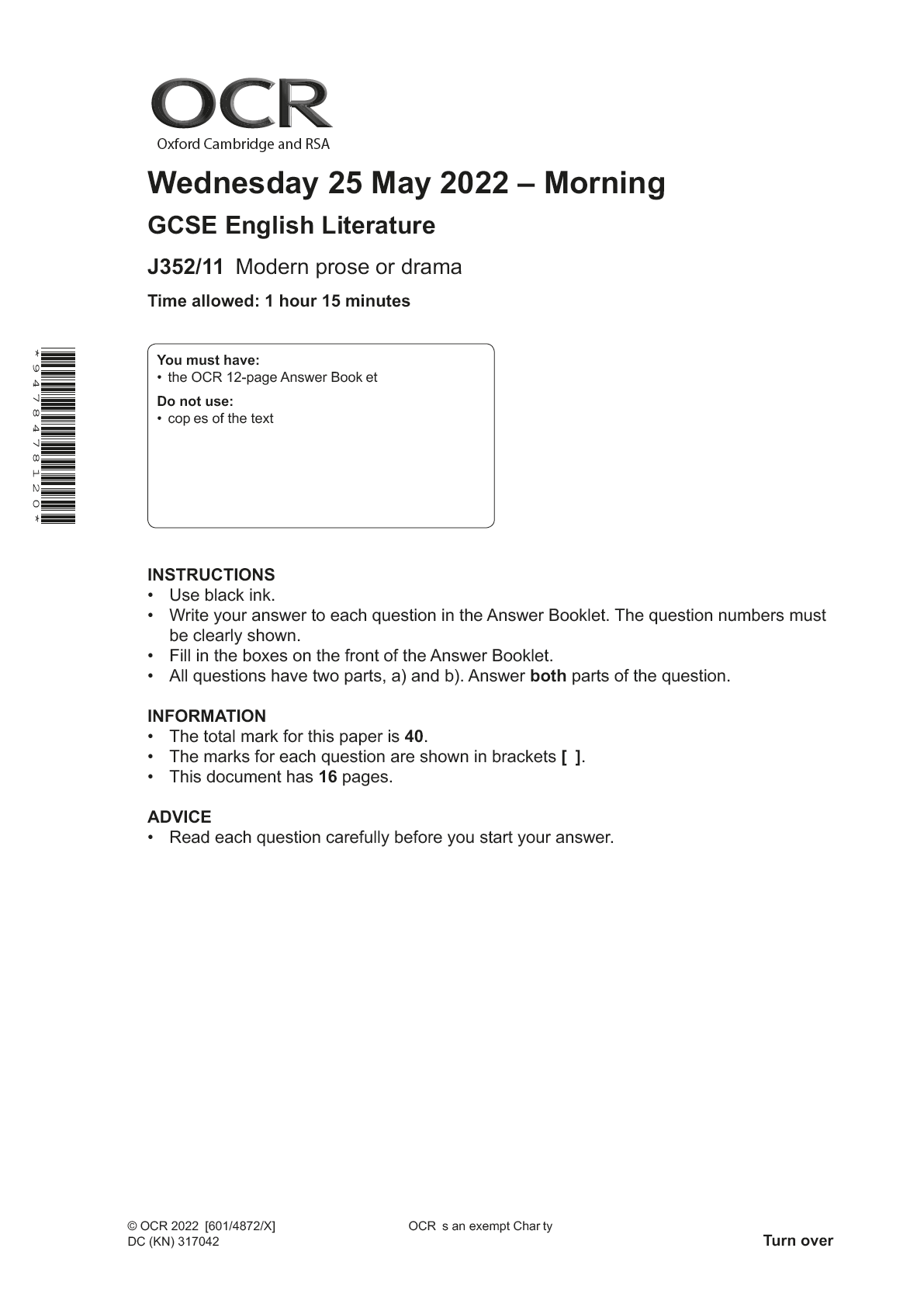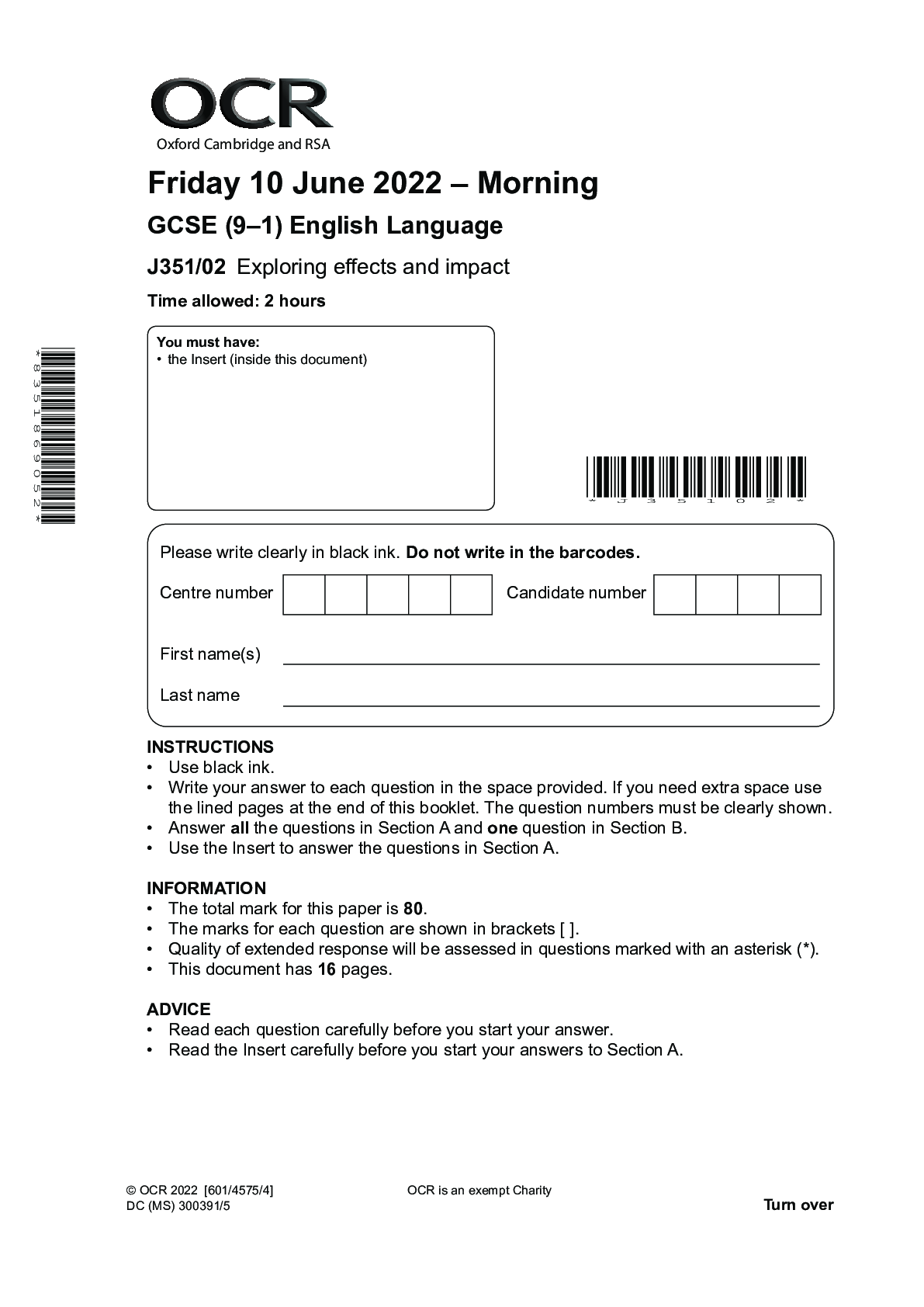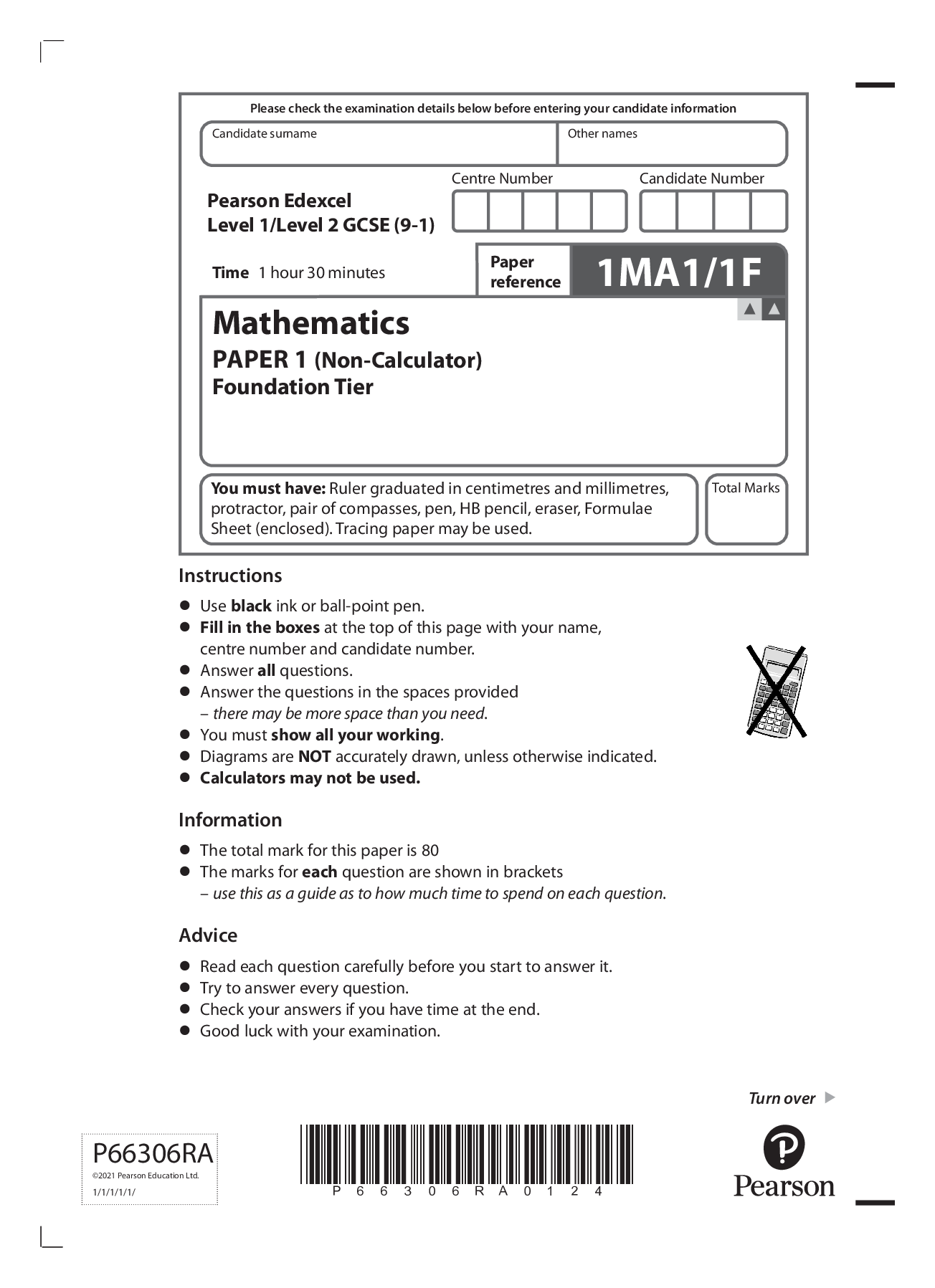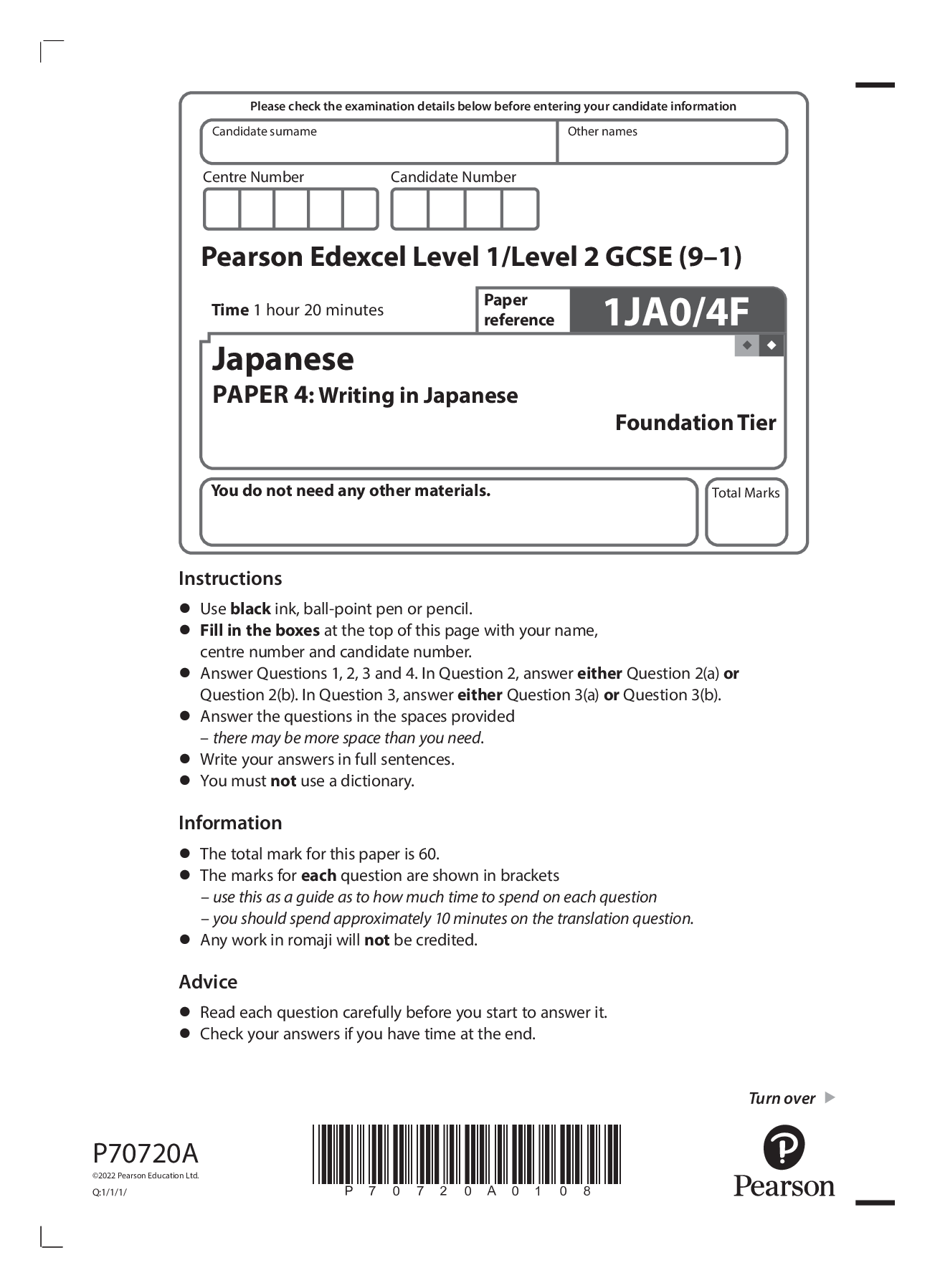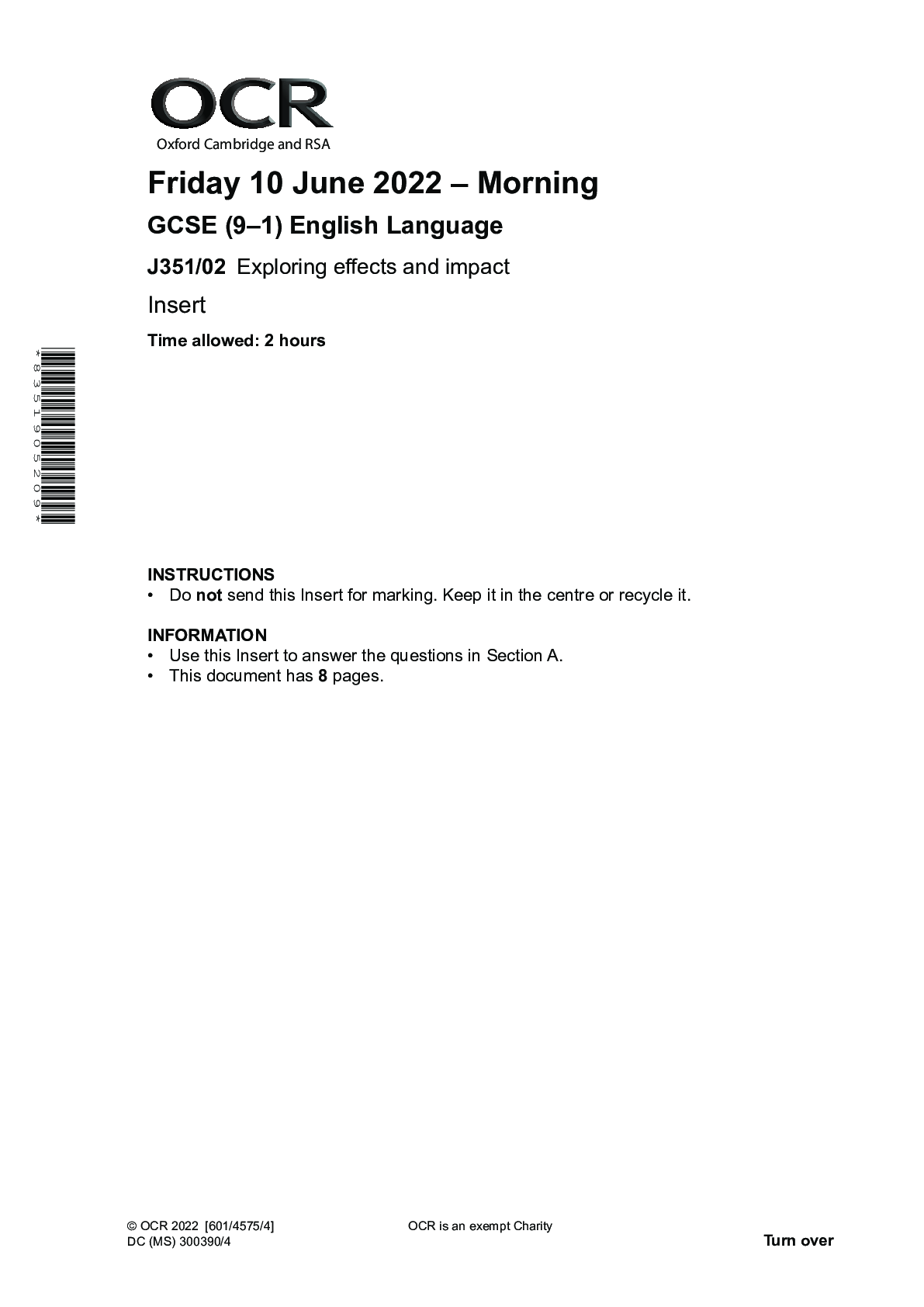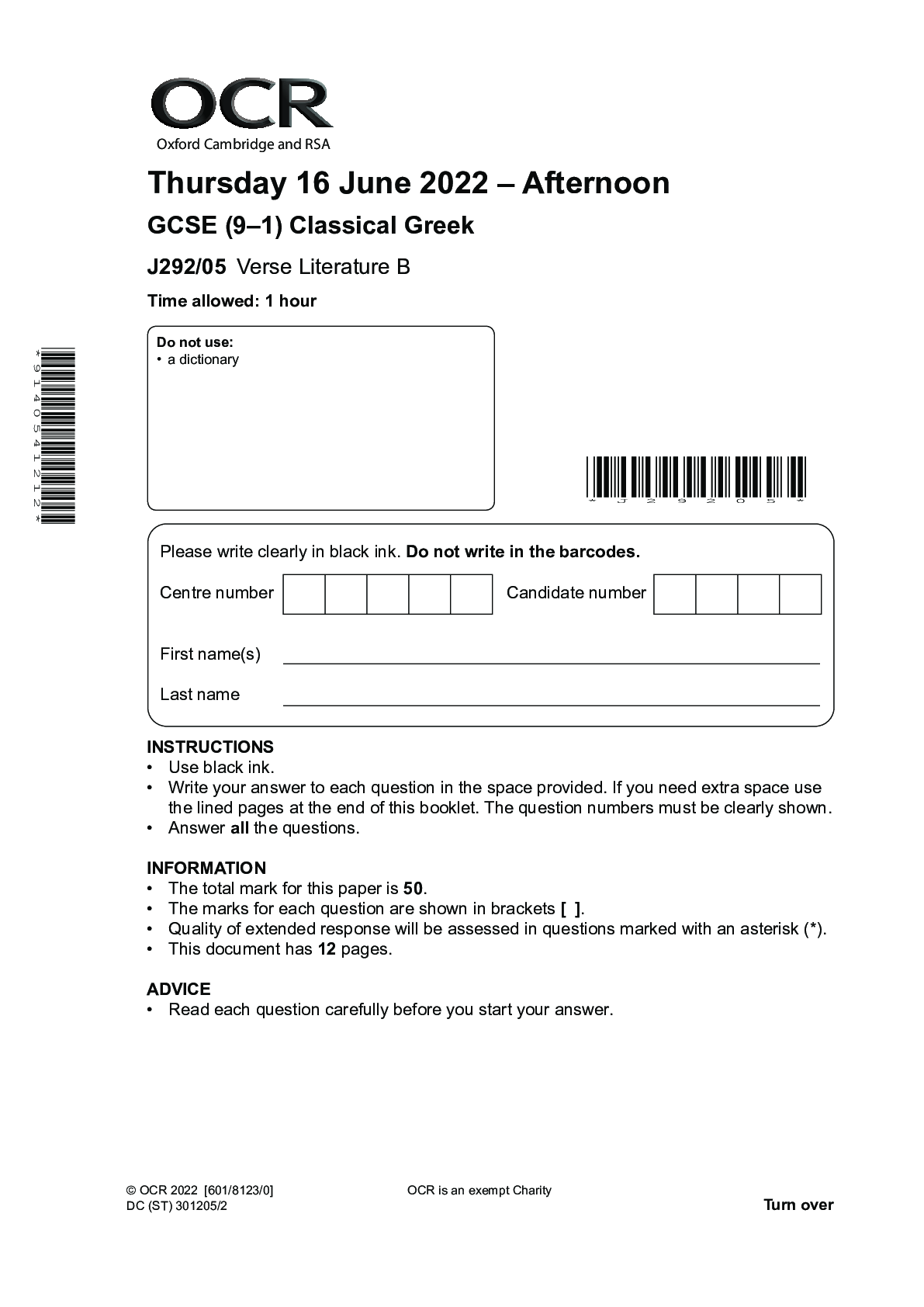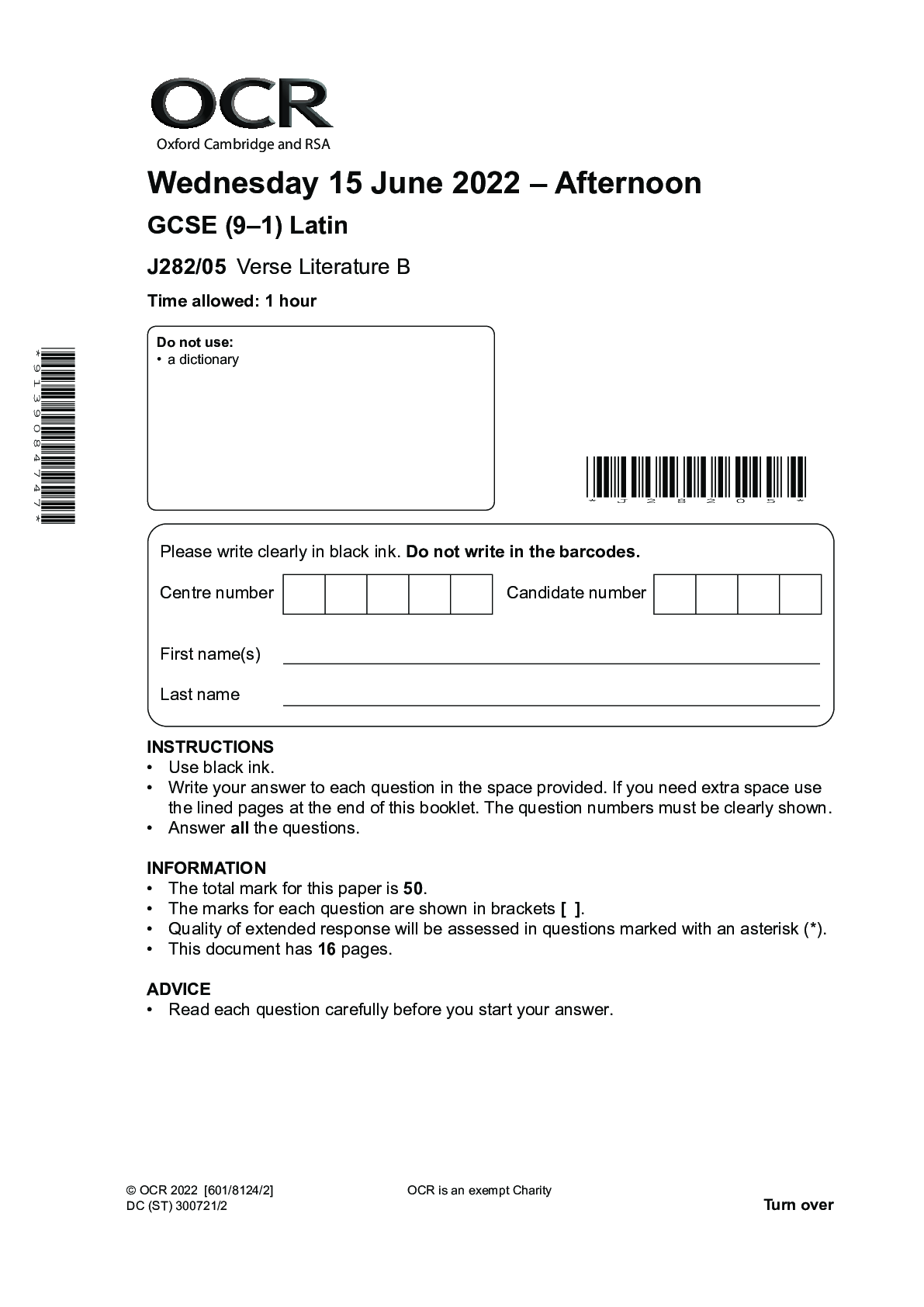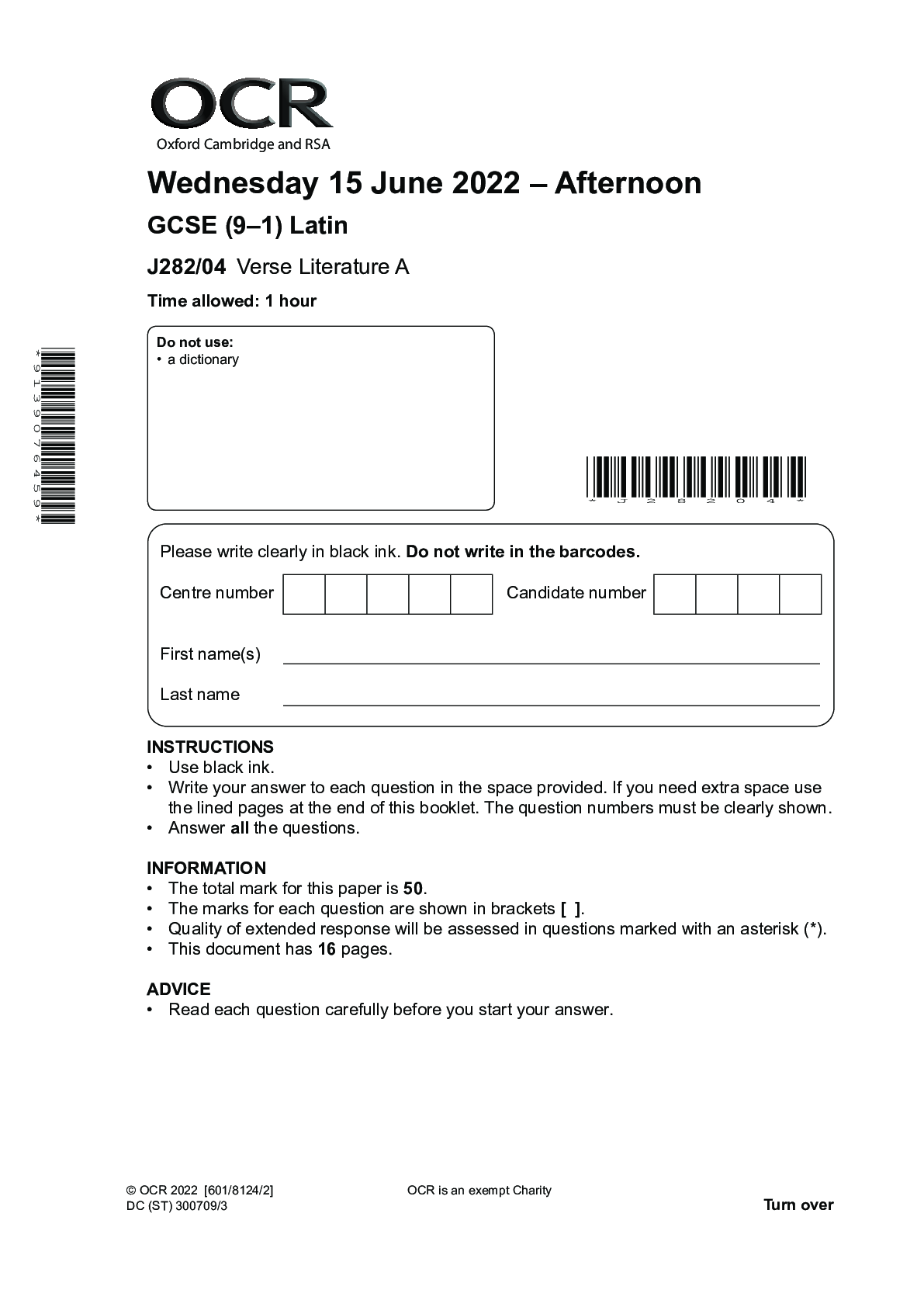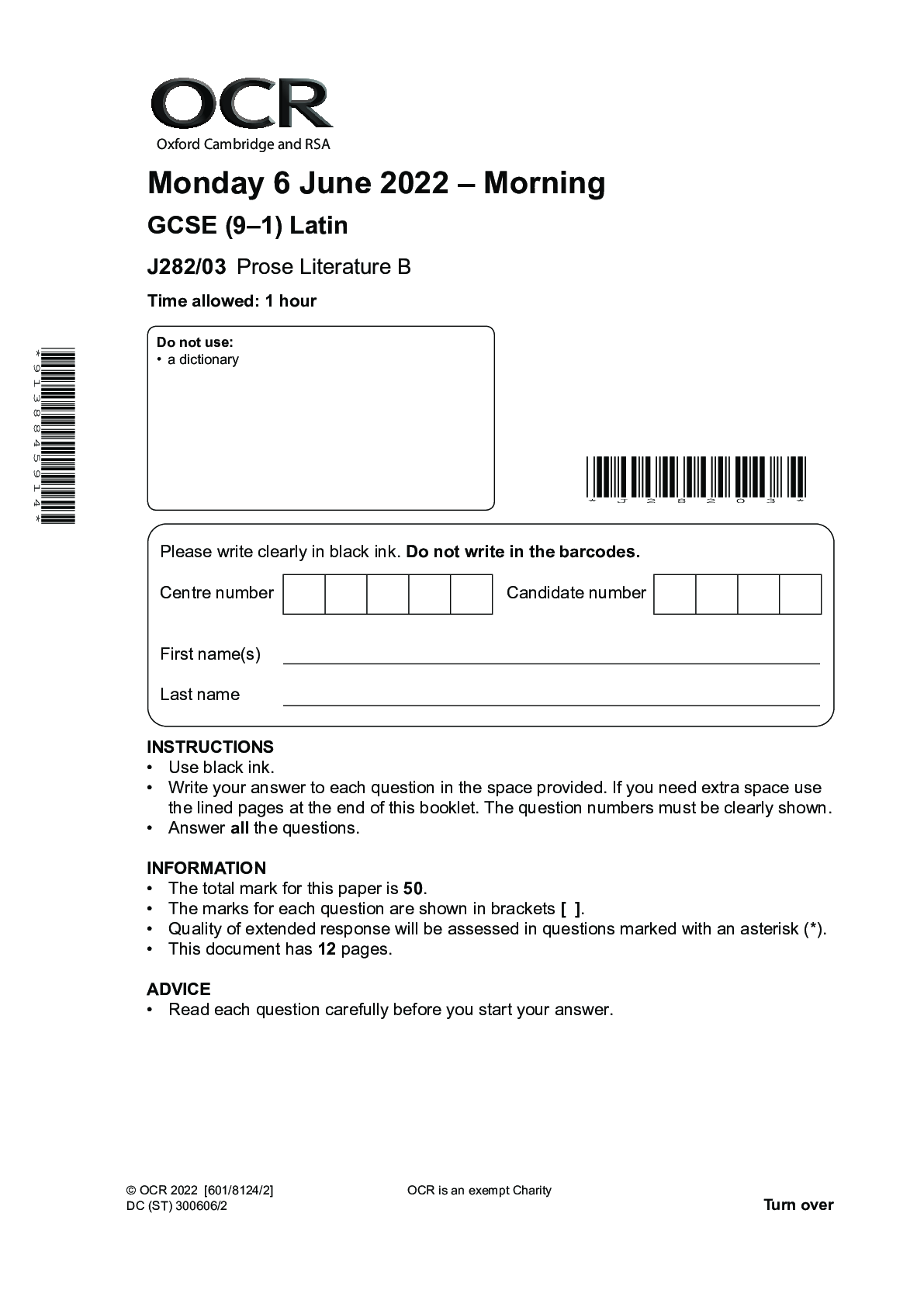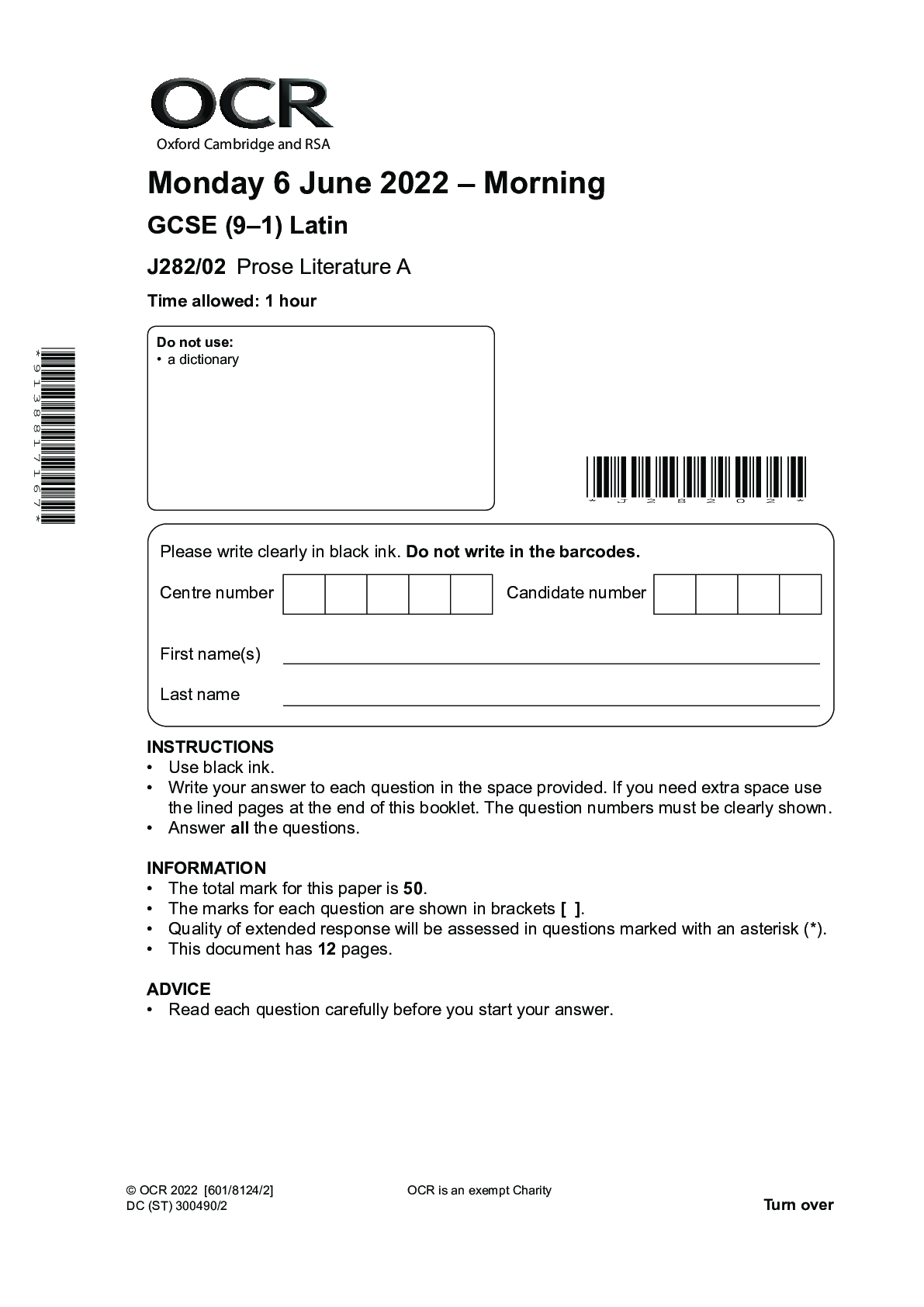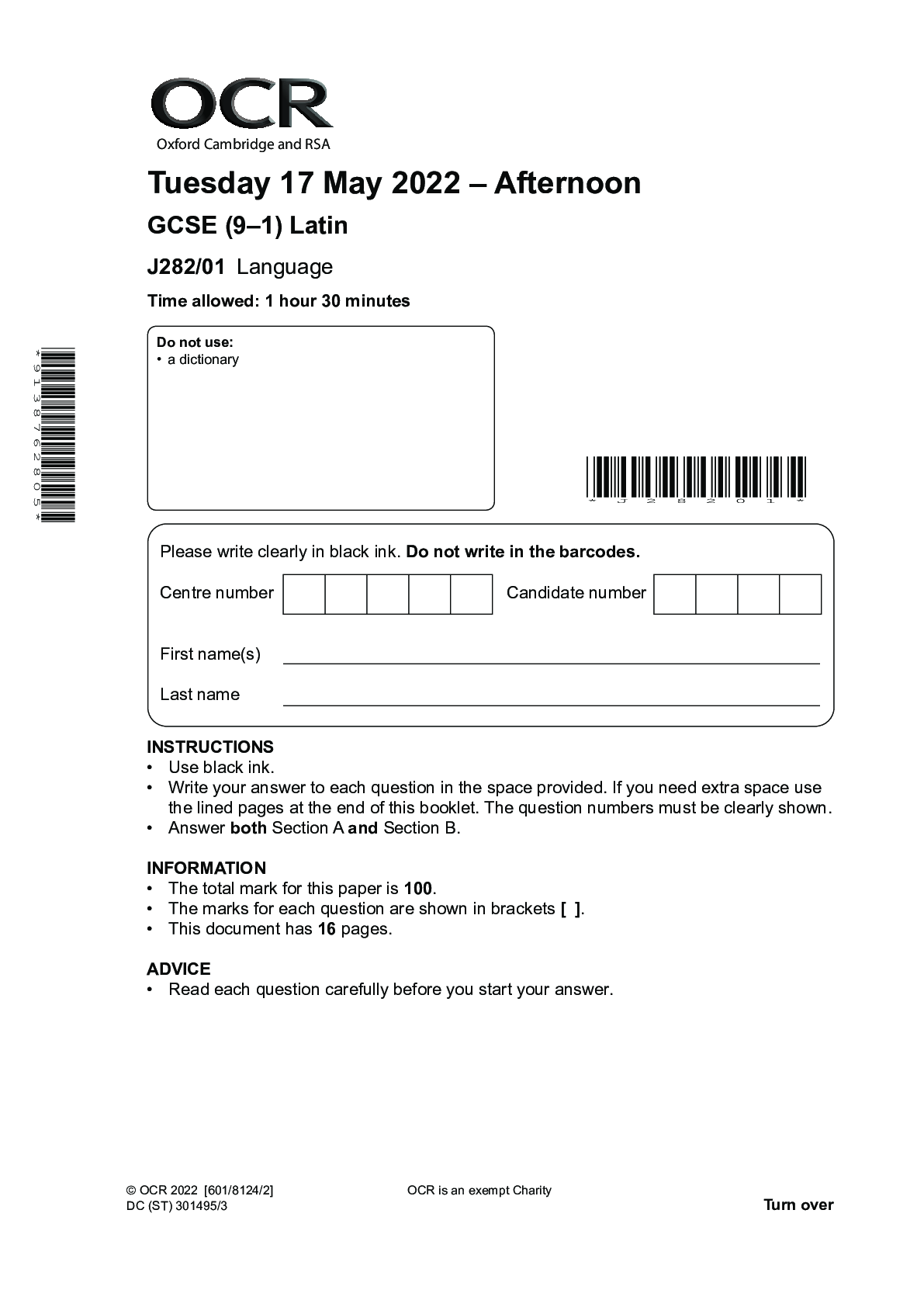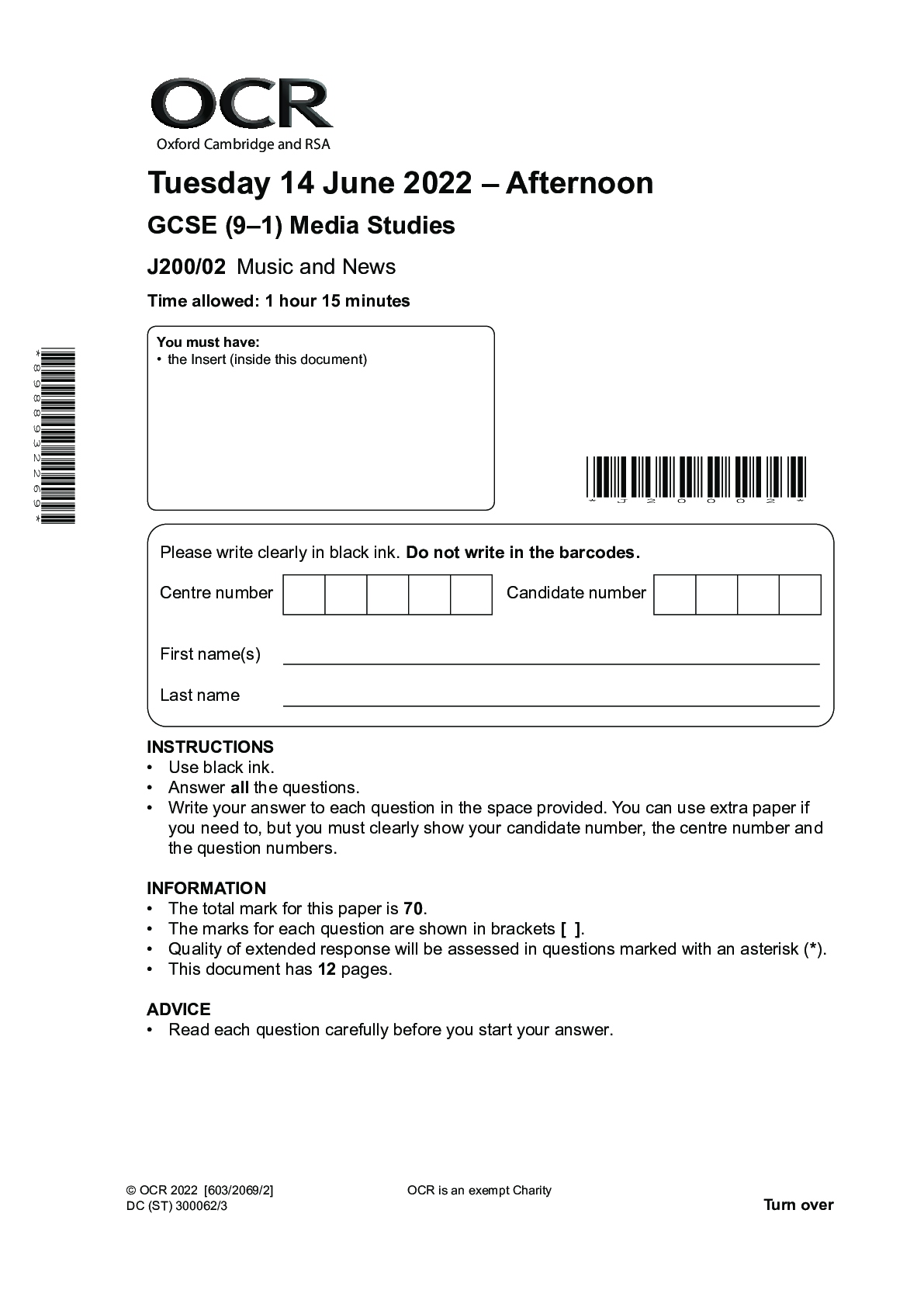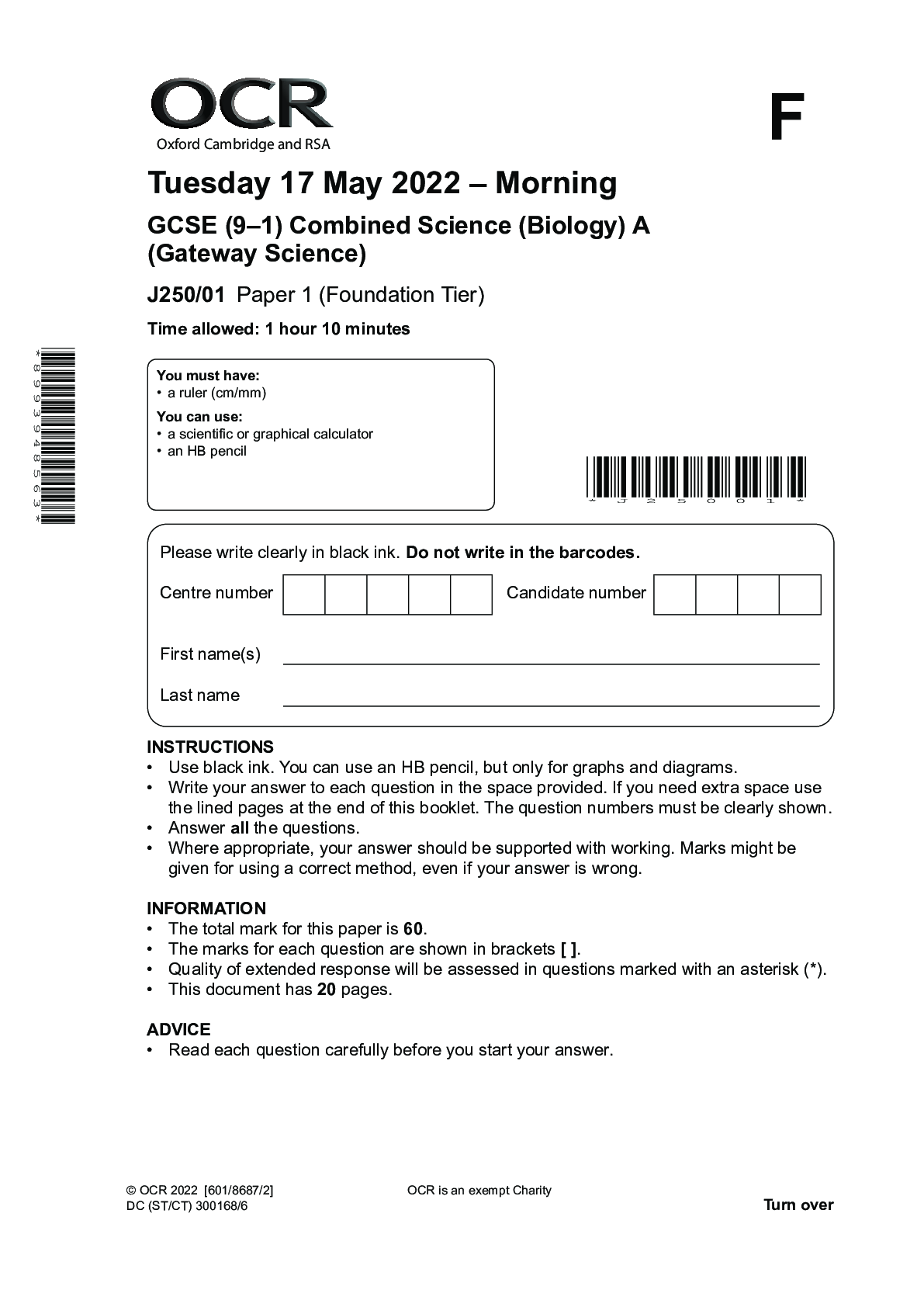Combined Science: Synergy > QUESTION PAPER (QP) > Pearson Edexcel Level 1 /Level 2 GCSE (9-1 ) Time 1 hour 10 minutes Paper reference 1 sco/l Combined (All)
Pearson Edexcel Level 1 /Level 2 GCSE (9-1 ) Time 1 hour 10 minutes Paper reference 1 sco/l Combined Science PAPER 3 Foundation Tier. 2022
Document Content and Description Below
Instructions • Use black ink or ball‑point pen. • Fill in the boxes at the top of this page with your name, centre number and candidate number. • Answer all questions. • Answer the que... stions in the spaces provided – there may be more space than you need. Information • The total mark for this paper is 60. • The marks for each question are shown in brackets – use this as a guide as to how much time to spend on each question. • In questions marked with an asterisk (*), marks will be awarded for your ability to structure your answer logically, showing how the points that you make are related or follow on from each other where appropriate. • A list of equations is included at the end of this exam paper. Advice • Read each question carefully before you start to answer it. • Try to answer every question. • Check your answers if you have time at the end. You must have: Calculator, ruler, Equation Booklet (enclosed) Combined Science PAPER 3 Foundation Tier Time 1 hour 10 minutes 1SC0/1PF Pearson Edexcel Level 1/Level 2 GCSE (9–1) P69479A ©2022 Pearson Education Ltd. Q:1/ *P69479A0220* 2 Answer ALL questions. Write your answers in the spaces provided. Some questions must be answered with a cross in a box . If you change your mind about an answer, put a line through the box and then mark your new answer with a cross . 1 (a) Figure 1 shows how the visible spectrum of white light is shown on a screen. white light glass prism visible spectrum screen Figure 1 (i) Which of these is the best piece of equipment to produce the white light? (1) A ray box B ruler C measuring cylinder D ammeter (ii) Which colour is seen between yellow and blue in the spectrum on the screen? (1) A red B orange C green D violet *P69479A0320* Turn over 3 (b) Figure 2 shows the main parts of the electromagnetic spectrum. radio microwaves infrared visible light ultraviolet x‑rays gamma rays Figure 2 Complete the following sentences using information from Figure 2. Each part of the electromagnetic spectrum may be used once, more than once or not at all. (i) The part of the electromagnetic spectrum used to detect broken bones is (1) ......................................................................................................................................................... (ii) The part of the electromagnetic spectrum used in thermal imaging is (1) ......................................................................................................................................................... (iii) The part of the electromagnetic spectrum that • is used to cook food AND • has a shorter wavelength than microwaves is (1) ......................................................................................................................................................... (iv) The part of the electromagnetic spectrum that • is used to sterilise medical equipment AND • has a shorter wavelength than x‑rays is (1) ......................................................................................................................................................... (Total for Question 1 = 6 marks) *P69479A0420* 4 2 This question is about waves. (a) Figure 3 is a diagram of a water wave in a ripple tank. 42cm P Q direction water wave moves crests of the water wave Figure 3 (i) State the number of crests of the wave between P and Q. (1) number of crests = .............................................................. (ii) The distance between P and Q is 42cm. Calculate the wavelength of the water wave in Figure 3. (2) wavelength = .............................................................. cm *P69479A0520* Turn over 5 (iii) Describe how a student could determine the wave speed of the water wave in Figure 3. (3) .................................................................................................................................................................................................................................................................................... .................................................................................................................................................................................................................................................................................... .................................................................................................................................................................................................................................................................................... .................................................................................................................................................................................................................................................................................... .................................................................................................................................................................................................................................................................................... .................................................................................................................................................................................................................................................................................... (b) (i) Which row of the table is correct for sound waves? (1) A B l C D (ii) A sound wave has a frequency of 440Hz and a wavelength of 0.75m. Calculate the wave speed of the sound wave. (2) wave speed = .............................................................. m/s (Total for Question 2 = 9 marks) sound waves are can sound waves transfer energy? longitudinal yes longitudinal no transverse yes transverse no *P69479A0620* 6 3 (a) Figure 4 shows a truck lifting a box. box 2.1m truck Figure 4 The box has a mass of 57kg. The truck lifts the box through a vertical height of 2.1m. The gravitational field strength, g = 10N/kg Calculate the change in the gravitational potential energy of the box. Use the equation ΔGPE = m×g×Δh (2) change in gravitational potential energy = ..............................................................J *P69479A0720* Turn over 7 (b) A cyclist of mass 70kg travels at a constant velocity of 8m/s. Calculate the kinetic energy of the cyclist. (3) kinetic energy of the cyclist = ..............................................................J (c) Figure 5 shows a trolley at the top of a slope. α trolley slope Figure 5 A student gently pushes the trolley until it just starts to roll down the slope. The student measures the time it takes for the trolley to roll down the slope. The student repeats this for different values of the angle α. Figure 6 is a graph of the student’s results. *P69479A0820* 8 1.2 1.1 1.0 0.9 0.8 0.7 0.6 0.5 0.4 0.3 time the trolley takes to roll down the ramp in s 0 10 20 30 40 50 60 70 80 90 angle α in ° Figure 6 (i) Use the graph in Figure 6 to find the time the trolley takes to roll down the ramp when the angle α = 45°. (1) time = .............................................................. s (ii) Use the graph in Figure 6 to estimate the time the trolley takes to roll down the ramp when the angle α = 80°. Show your working on the graph. (2) time = .............................................................. s *P69479A0920* Turn over 9 (iii) The student had a choice of how to measure the time the trolley takes to roll down the ramp. 1. Use a hand‑held stopwatch. 2. Use light gates at the top and bottom of the slope. The student chose to use the light gates. Explain why this was the correct choice. You should refer to the data on the time axis of Figure 6 in your answer. (2) .................................................................................................................................................................................................................................................................................... .................................................................................................................................................................................................................................................................................... .................................................................................................................................................................................................................................................................................... .................................................................................................................................................................................................................................................................................... (Total for Question 3 = 10 marks) *P69479A01020* 10 4 (a) Figure 7 shows a safety sign on the door of a laboratory where radioactive materials are used. DANGER Radiation Hazard Figure 7 (i) State one way that radioactivity can be dangerous to humans. (1) .................................................................................................................................................................................................................................................................................... .................................................................................................................................................................................................................................................................................... (ii) State one piece of equipment that can be used to measure [Show More]
Last updated: 2 years ago
Preview 1 out of 20 pages

Buy this document to get the full access instantly
Instant Download Access after purchase
Buy NowInstant download
We Accept:

Reviews( 0 )
$7.00
Can't find what you want? Try our AI powered Search
Document information
Connected school, study & course
About the document
Uploaded On
Apr 03, 2023
Number of pages
20
Written in
Additional information
This document has been written for:
Uploaded
Apr 03, 2023
Downloads
0
Views
116

